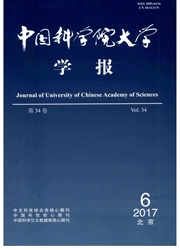

 中文摘要:
中文摘要:
气候变化是人类面临的全球环境问题之一,而温室气体的排放是引起气候变化的一个重要原因,因此温室气体的排放量估算是环境变化研究热点,其中对其估算方法是研究内容之一.2003年,在三江平原典型沼泽湿地,采用收割法和静态箱一气相色谱法研究不同植被类型小叶章、毛果和漂筏地上生物量及CH4、N2O排放量.通过对地上植物生物量与CH4、N2O排放量数据分析表明,在地上生物量达到最大前,三江平原沼泽湿地生长季不同植被群落生物量与CH4、N2O排放累积量呈现强的线性相关.可用Y=b1X+b0函数表示,R^2都在0.89以上.
 英文摘要:
英文摘要:
In this study, we explored relationships between plant biomass and emission of greenhouse-gases. The biomass of different plant communities (Deyeuxia angustifolia, Carex lasiocarpa and Carex pseudocuraic ) and emission of CH4, N2O were studied in the typical freshwater wetland in Sanjiang Plain from June to September, 2003. The result suggests that the season variations of the aboveground biomass can be described by parabola model Y = a + bT + cT^2 . The emission of CH4 showed strong difference in the plant zones and the trend is reduction from center to brim in the Sanjiang Wetland. The emission of N=O of communities expresses the trend of "up-down-up". But the first time of the top emission is earlier in the Deyeuxia angustifolia than Carex lasiocarpa and Carex pseudocuraic distinctly. Analyses show that the biomass of different plant community has the strong linear relation with the cumulated emission of CH4, N2O before the plant reaches its largest aboveground biomass during growing seasons. And it can be described by function Y = aX + b, and their R^2 were almost over 0.89.
 同期刊论文项目
同期刊论文项目
 同项目期刊论文
同项目期刊论文
 期刊信息
期刊信息
